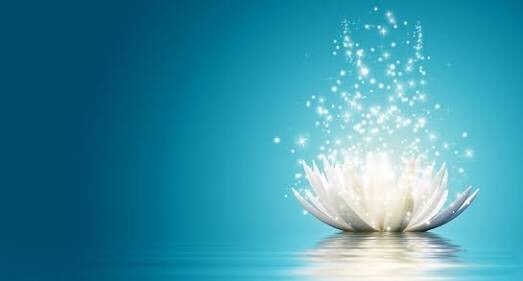ショウガの代謝促進効果、以下のような報告、なかなかすごいと思います。ミトコンドリア新生も助けるとは。
Promotion of Mitochondrial Biogenesis via Activation of AMPK-PGC1ɑ Signaling Pathway by Ginger (Zingiber officinale Roscoe) Extract, and Its Major Active Component 6-Gingerol – PubMed
Abstract
Several studies indicated that ginger (Zingiber officinale Roscoe) enhances thermogenesis and/or energy expenditure with which to interpret the beneficial effects of ginger on metabolic disorders. It is well known that mitochondrial activity plays an essential role in these processes. Thus, this study aimed to investigate the effect of ginger extract (GE) and its major components, 6-gingerol and 6-shogaol, on mitochondrial biogenesis and the underlying molecular mechanisms. Our results showed that GE at dose of 2 g/kg promoted oxygen consumption and intrascapular temperature in mice. The mitochondrial DNA (mtDNA) copy number in muscle and liver increased. Expression levels of oxidative phosphorylation (OXPHOS) related proteins and AMP-activated protein kinase ɑ/proliferator-activated receptor gamma coactivator 1 ɑ (AMPK/PGC1ɑ) signaling related proteins in the muscle, liver, and brown adipose tissue (BAT) increased as well. In HepG2 cells, GE at concentration of 2.5 and 5 mg/mL increased mitochondrial mass and mtDNA copy number. GE promoted ATP production, the activities of mitochondrial respiratory chain complex I and IV, and expression levels of OXPHOS complex related proteins and AMPK/PGC1ɑ signaling related proteins. The antagonist of AMPK eliminated partly the effect of GE on mitochondrial biogenesis. 6-Gingerol increased mitochondrial mass, mtDNA copy number and ATP production, and the activities of mitochondrial respiratory chain complexes in HepG2 cells as well. However, both 6-gingerol at high concentration of 200 µM and 6-shogaol at 10 to 200 µM inhibited cell viability. In conclusion, GE promoted mitochondrial biogenesis and improved mitochondrial functions via activation of AMPK-PGC1ɑ signaling pathway, and 6-gingerol other than 6-shogaol, may be the main active component. PRACTICAL APPLICATION: Ginger (Zingiber officinale Roscoe) is a food seasoning and also used as a medical plant in alternative medicine throughout the world. Here, we demonstrated that ginger extract (GE) promoted mitochondrial biogenesis and mitochondrial function via activation of AMPK-PGC1ɑ signaling pathway both in mice and in HepG2 cells, and 6-gingerol may be its main active component. Ginger, with anticipated safety, is expected to be a long-term used dietary supplement and be developed into a new remedy for mitochondrial dysfunctional disorders.
— 読み進める pubmed.ncbi.nlm.nih.gov/31369153/
概要
いくつかの研究は、ショウガ(Zingiber officinale Roscoe)が、代謝障害に対するショウガの有益な効果を解釈するための熱発生および/またはエネルギー消費を高めることを示しました。 ミトコンドリアの活動がこれらのプロセスで重要な役割を果たすことはよく知られています。 したがって、この研究は、ショウガ抽出物(GE)とその主成分である6-ジンゲロールと6-ショウガオールがミトコンドリアの生合成とその根底にある分子メカニズムに及ぼす影響を調査することを目的としています。 我々の結果は、2g / kgの用量のGEがマウスの酸素消費と肩甲骨内温度を促進することを示した。 筋肉と肝臓のミトコンドリアDNA(mtDNA)のコピー数が増加しました。 酸化的リン酸化(OXPHOS)関連タンパク質およびAMP活性化プロテインキナーゼɑ/増殖因子活性化受容体ガンマ共活性化因子1ɑ(AMPK /PGC1ɑ)シグナル伝達関連タンパク質の筋肉、肝臓、褐色脂肪組織(BAT)の発現レベルも増加しました 。 HepG2細胞では、2.5および5 mg / mLの濃度のGEは、ミトコンドリアの質量とmtDNAのコピー数を増加させました。 GEは、ATP産生、ミトコンドリア呼吸鎖複合体IおよびIVの活性、OXPHOS複合体関連タンパク質およびAMPK /PGC1ɑシグナル伝達関連タンパク質の発現レベルを促進しました。 AMPKのアンタゴニストは、ミトコンドリアの生合成に対するGEの影響を部分的に排除しました。 6-ジンゲロールは、ミトコンドリアの質量、mtDNAコピー数、ATP産生、およびHepG2細胞におけるミトコンドリア呼吸鎖複合体の活性も増加させました。 しかし、200 µMの高濃度の6-ジンゲロールと10〜200 µMの6-ショウガオールの両方が細胞生存率を阻害しました。 結論として、GEはAMPK-PGC1ɑシグナル伝達経路の活性化を介してミトコンドリアの生合成を促進し、ミトコンドリア機能を改善し、6-ショウガオール以外の6-ジンゲロールが主要な活性成分である可能性があります。 実用的なアプリケーション:生姜(Zingiber officinale Roscoe)は食品の調味料であり、世界中の代替医療の薬用植物としても使用されています。 ここでは、ショウガ抽出物(GE)がマウスとHepG2細胞の両方でAMPK-PGC1ɑシグナル伝達経路の活性化を介してミトコンドリアの生合成とミトコンドリア機能を促進し、6-ジンゲロールがその主要な活性成分である可能性があることを示しました。 安全性が期待されるショウガは、長期的に使用される栄養補助食品であり、ミトコンドリア機能障害の新しい治療法に発展することが期待されています。

